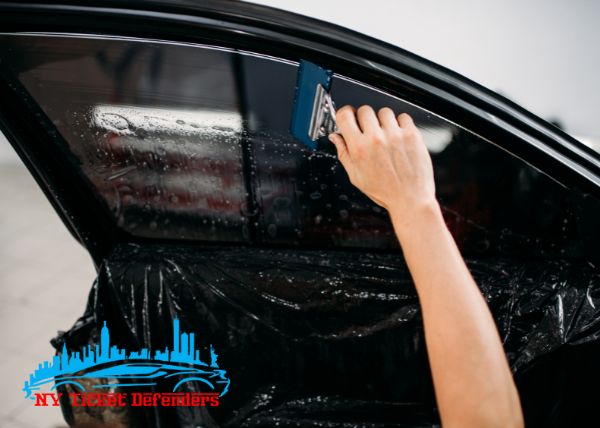Top Factors to Select Professional Vehicle Window Tinting Providers
Top Factors to Select Professional Vehicle Window Tinting Providers
Blog Article
Window Tinting Rules and Guidelines: What You Need to Know Before Tinting Your Cars And Truck
Before continuing with home window tinting for your automobile, it is necessary to familiarize on your own with the diverse regulations and standards that govern this technique across various states. These laws dictate the permissible degrees of color darkness, typically measured by visible light transmission (VLT) portions, and include specific terms for front windscreens aimed at making sure roadway safety.
Review of Home Window Tinting Rules
Window tinting legislations are regularly subject to variant throughout various territories, reflecting neighborhood laws and safety factors to consider. These legislations dictate the permissible degrees of tint darkness and reflectiveness on vehicle home windows, making sure that chauffeurs keep sufficient presence while likewise safeguarding versus dangerous UV rays and warm.
Many policies identify home window tinting based on the Visible Light Transmission (VLT) percentage, which shows the amount of light that can go through the home window. Typically, reduced VLT percents symbolize darker colors. Laws typically differentiate between the front, side, and rear home windows, with more stringent restrictions related to the front windscreen to improve safety for both the vehicle driver and other roadway users.
Compliance with window tinting guidelines is important, as infractions can result in fines, required elimination of the tint, and potential rises in insurance costs. It is crucial for vehicle owners to acquaint themselves with regional regulations before continuing with home window tinting setups.
State-by-State Color Rules
Understanding the certain home window tinting regulations in each state is crucial for lorry proprietors looking for to follow the regulation. Each state in the U.S. has established its very own collection of guidelines controling home window tinting, which can vary substantially. These policies usually determine the allowable levels of tint darkness, the sorts of windows that can be tinted, and any medical exceptions that might use.
As an example, states like The golden state have rigorous limitations on color darkness for front windows, while others, such as New Mexico, may enable darker tints. Furthermore, specific states mandate specific presence percents for various home windows, consisting of the windscreen, front side windows, and rear home windows. It is essential for automobile owners to familiarize themselves with their state's laws to stay clear of prospective fines or fines.
In addition, some states might require a qualification sticker to be positioned on tinted windows, indicating conformity with state legislations. Failure to abide by these guidelines not just risks legal effects however can also influence security and exposure while driving. Automobile owners should carry out thorough research study or consult regional authorities to make certain full understanding and compliance with state-by-state color guidelines.
Allowed Color Levels and Types
Many automobile proprietors may be shocked to learn that enabled color degrees and types vary commonly across different states. Each state has established its very own laws pertaining to the acceptable darkness and reflectivity of window color, commonly determined by Visible Light Transmission (VLT) portions. VLT describes the quantity of light that can pass via the colored home windows; thus, a lower percent shows a darker tint.

Furthermore, the kinds of tint materials allowed can differ, with some states prohibiting metallic or mirror-like coatings. It is necessary for vehicle proprietors to acquaint themselves with their state's certain laws to make sure compliance. Non-compliance can lead to fines, required removal of the color, additional resources or various other lawful repercussions, making it essential to comprehend these laws prior to waging installation.
Medical Exceptions for Tinting
While not all states provide allowances for medical exemptions regarding window tinting, those that do acknowledge the necessity for particular individuals to improve visibility and convenience due to clinical conditions. Various medical problems, such as lupus, skin cancer, and particular eye problems, can make individuals specifically sensitive to sunlight. Consequently, these individuals might require darker colors to protect themselves from hazardous UV rays and glow.

It is very important to note that also with a clinical exception, there may still be restrictions on the degree of tint allowed. Conformity with state legislations ensures that people are both protected and within legal limits. Those taking into consideration medical exceptions need to call their neighborhood Division of Electric motor Autos or comparable authority to comprehend the treatments and needs essential to get an exemption effectively.
Fines for Non-Compliance
Falling short to adhere to window tinting laws can bring about significant charges, which differ by state. Police are encouraged to provide citations for vehicles that do not comply with the defined tinting policies. These fines commonly include fines, which can vary from modest amounts to numerous hundred dollars, relying on the seriousness of the offense and the state concerned.
In some jurisdictions, duplicated offenses might cause escalating penalties or added fines, such as mandatory court appearances. Additionally, non-compliance might necessitate the removal of illegal tinting, frequently at the owner's cost. In severe instances, regular wrongdoers may face suspension of their vehicle enrollment until compliance go to website is accomplished.
Furthermore, insurance policy ramifications may emerge from obtaining multiple citations for home window tint infractions. Insurance companies may watch such violations as an indication of riskier behavior, potentially resulting in raised costs or problem in coverage.
To prevent these charges, it is essential for lorry owners to acquaint themselves with their local window tinting regulations and ensure that their car complies (Window Tinting). This proactive strategy not just prevents legal implications however additionally advertises roadway security
Conclusion

Many guidelines classify window tinting based on the Visible Light Transmission (VLT) percentage, which suggests the quantity of light that can pass via the window. Compliance with home window tinting regulations is critical, as offenses can result in penalties, mandatory removal of the tint, and possible boosts in insurance policy costs.Understanding the particular home window tinting regulations in each state is crucial for vehicle proprietors seeking to abide with the regulation. These guidelines often determine the allowed degrees of tint darkness, the kinds of windows that can be tinted, and any type of clinical exemptions that may use.
For circumstances, states like California have rigorous constraints on tint darkness for front home windows, while others, such as New Mexico, might permit darker colors.
Report this page